Bali White Water Rafting
What is the best thing you love about Bali? Most tourists would say it’s the beaches, temples, and peoples.
But Bali offers a whole lot more, with attractions tailored to anyone in the family to enjoy. Either you are going on a leisure leap and planning just to laze under the sun or you are eagerly seeking some adrenaline rush, Bali has it all.
And, Bali White Water Rafting is, indeed, an outdoor activity that intrigues both the laid back and the adventure seekers during their holiday in Bali.
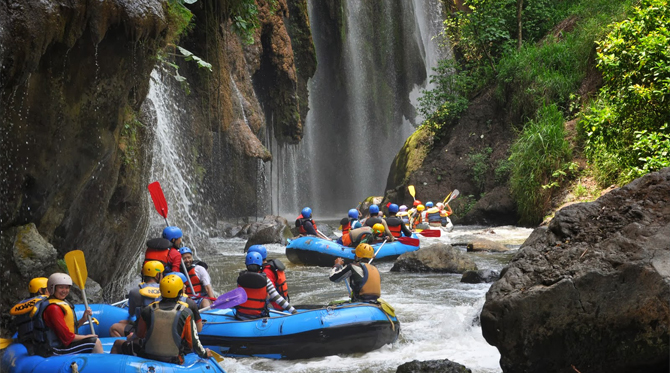
This popular activity allows you to immerse yourself in nature, with different excitements awaiting you at each bend.
Riding and paddling on an inflatable raft, navigating through the lush rainforests of the Bali highlands, swim in pristine water, find hidden waterfalls, bathing in crystal-clear nature pools, see rare flora and fauna up close.
We’re going to dig deep to give you all information about white water rafting in Bali, but feel free to jump to any section that interests you:
- Bali White Water Rafting Locations
- Bali White Water Rafting Price & Inclusions
- Bali White Water Rafting Levels or Classes
- Age Limits for White Water Rafting in Bali
- White Water Rafting Safety Tips for Beginners
- What should You carry for river rafting in Bali
- Best time for White Water Rafting in Bali
Bali White Water Rafting Locations
There are 3 (three) main rivers and popular location for white water rafting in Bali, they are: the Ayung River, the Telaga Waja River and the Melangit River.
Each river has different grades and rapid classes, so let’s take a closer look to those river with detailed information and locations.
1. Ayung Rriver
Located at Kedewatan Ubud, is the widest and longest river in Bali, stretching 75 kilometres from the northern mountains area all the way to the Badung Strait at Sanur.
With the condition of calm waters and manageable drops and turns, the streams give visitors of all ages the right level of excitement. Children as young as age 9 to elderly of maximum 65 years of age are allowed to take part in the joyride.
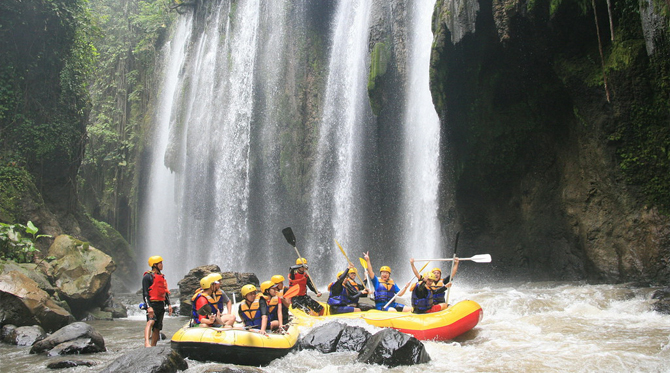
Following the International Scale for River Difficulty, there are six grades of difficulty in white water rafting. Each grade is numbered to describe the conditions of the strength of streams, expected waves, rocky conditions, expected drops-offs and individual skill levels ability to maneuver through the river.
Classified as class II and III in the dry the season, means that the Ayung has some rough water, some rocks, small drops, but poses no considerable danger. Skill levels here range from basic paddling with some experience in rafting will suffice for the journey.
In the rainy season, however, when the water-level rises, the Ayung is classified as class IV, having medium large waves and needing better skills to maneuver the sharp bends when needed.
2. Telaga Waja River
Located in eastern Bali, Indonesia. It rises on the slope of Mount Abang and passes through towns and wilderness slopes along the region of Rendang Village, reaching the sea in Klungkung Regency.
This is the longest river on east Bali start to runs southward Bali from southern slope of Mount Abang, as the favourite ‘class II and III’ rapid that is perfect for those looking for adventure in the Bali outback, with moderate difficulty and various natural and cultural highlights along its 14km course.
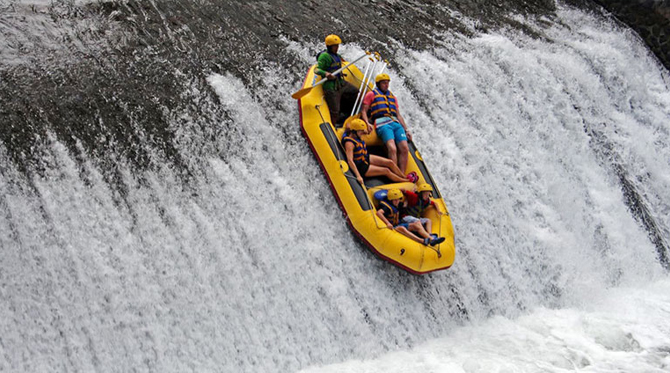
It is a great way for families and friends to spend a day out on inflatable rafts carrying up to four, and to experience a different side of Bali.
This course lets you immerse yourself in the green valley surroundings of Rendang village with fresh mountain air, occasional sightings of wild exotic birds and pure excitement.
With it’s specific current, clean water, natural views and soft rapid Telaga Waja River has becoming more and more popular among the adventure seekers on Bali to experience the thrill of holidays which combination between culture and nature.
3. Melangir River
Located at on the western part of Klungkung regency and eastern part of Gianyar Regency. From Ngurah Rai international airport it will take 1 hour 25 minutes driving through Jalan Professor Ida Bagus Mantra, distance about 38,4 kilometers.
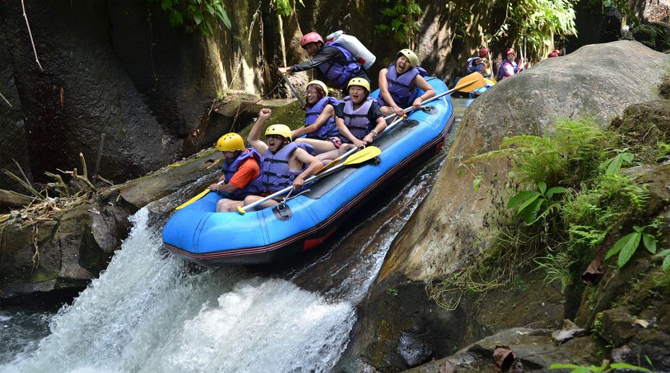
The river offer rain forest scenery with twist and turn on every part of the river, offer very sharp bend that will pump your adrenalin rapid class III-IV (intermediate).
The river turning are sharp, currents are fast and impacts of river walls are challenging that make the adventure more exiting with 8 KM long journey. Considering there are a lot of challenging rapids and interesting view a along the river, you will feel that adventure lasts too short.
Bali White Water Rafting Prices & Inclusions
There are many rafting companies in Bali, each has different starting, finish points, as well as facilities and prices. Most of the white water rafting publish prices is starting from 75 USD to 85 USD per person.
But if you book trough reiable local tour company of Bali Cheapest Tours and you will get lot cheaper as below price:
- Ayung River Rafting : 30 USD per person
- Telaga Waja River Rafting : 30 USD per person
- Melangit River Rafting : 35 USD per person
Above prices is included of air-conditioned return hotel transfers with private car/van, International safety standard rafting equipment, professionally trained and experience rafting guides, water resistant bags are provided for your valuable, changing room, shower facilities, towels, welcome drink, meals, and insurance.
Our highly professional team has built a comprehensive network with most rafting operators across Bali, and done the regular survey to compare their safety, rafting track, equipment, and quality!
As part of our service, we only provide the best of the best and quality white water rafting company for our customers, and continuously monitor the performance and important aspects of the operators we use.
Bali White Water Rafting Levels or Classes
If you are planning a trip to Bali, or you’re already there, you don’t want to miss going white water rafting!!
It’s honestly one of the best experiences of being on this beautiful island and we would like to share some general information with you about white water rafting clasess or levels of difficulty below;
- Ayung River Ubud (Level of Difficulty: Class II-III / Beginner)
- Telaga Waja River (Level of Difficulty: Class III-IV / Beginner)
- Melangit River (Level of Difficulty: Class IV-V / Intermediate).
LEVEL 2 or CLASS II RAPIDS - Easy rapids, waves up to three feet tall that are readily seen, and wide channels that can be discovered without scouting. Some maneuvering is required during this little rock and roll.
LEVEL 3 or CLASS III RAPIDS - Waves up to four feet and narrow passages that send the boat shimmying and water gushing over it’s sides. Plenty of excitement.
LEVEL 4 or CLASS IV RAPIDS - Medium waves, maybe rocks, maybe a considerable drop, sharp maneuvers may be needed. (Skill level: Exceptional rafting experience).
LEVEL 5 or CLASS V RAPIDS - Large waves, large volume, possibility of large rocks and hazards, possibility of a large drop, requires precise maneuvering.
Age Limits for White Water Rafting in Bali
Are you planning a family vacation to Bali? You have probably been examining all the options available to you, such as a trip to the beach or a quick jaunt to an amusement park, and you’ve settled on white water rafting.
You love the idea of spending time as a family while you do something physically challenging. Plus, you want to do something different this year, now that your kids are getting older — but what exactly is the age limit for white water rafting in Bali?
Due to safety reasons the white water rafting provides in Bali set the limit of 7 to 65 years old.
No child under the age of 7 is permitted to go whitewater rafting, even if their parents accompany them.
White Water Rafting Safety Tips for Beginners
Whether on vacation or just getting out of the house to cool off, white water rafting is a fun and invigorating outdoor activity and a great way to enjoy the outdoors no matter what your ability or experience level.
White water rafting is not just for the crazy hard core mountain people anymore. This popular sport is now more main stream than ever before. No pun intended.
But there are a few steps that you and your family can take to insure that your white water experience is a good one that you will look back on your experience in a positive way for years to come.
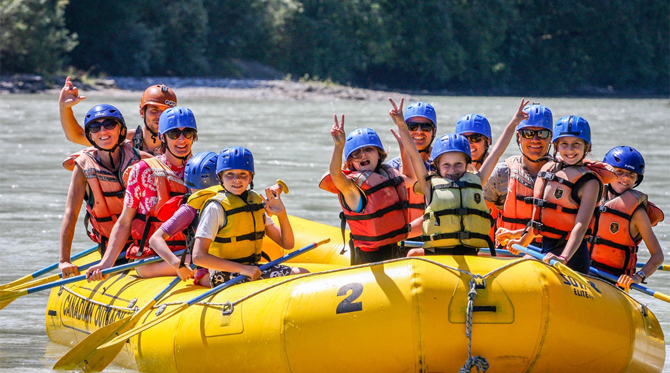
Rafting is fun! By following a couple of safety rules it can be even more enjoyable. Here are 7 safety rules that will help you and your family to enjoy the great outdoor experience known as white water rafting.
1. Always wear a life jacket, or personal flotation device (PFD)
Although just because you wear a life jacket, it doesn’t mean it will save your life. It must be worn correctly. All buckles must be clipped and the jacket should be fitted snug to your body.
The trick here is to have the jacket fitted so you can breathe yet the jacket should not be able to be pulled up over your head. Always have your professional guide fit your jacket. This will insure a perfect fit.
2. Be safe and comfortable. Wear the protective gear!
Always wear a helmet no matter what level of rafting you are participating in. Do not be over confident, always wear helmet period. No excuses. You will never know, when it will come handy.
3. Hold the paddle properly
Holding the paddle properly can be a huge safety concern. One hand should be at the base of the paddle on the shaft. The other hand should always be on the end of the shaft over the “T” grip.
The “T” grip is made of hard plastic and can blacken eyes and knock out teeth. Keeping your hand over the “T” grip will keep control of the paddle and cushion the blow if it should happen. Ask your professional commercial guide for the proper technique.
4. Position yourself properly on the raft
You need to properly balance yourself in the raft. Most of the times, you should stay at the outer rim of the raft for balance, with your feet placed lightly under the air tube.
5. Get ready to swim, if in trouble
Even with best precautions, you may find yourself in the water so if you know how to swim, be ready to swim. Always look for guide’s cues in case you fall into the water.
6. Paddle together
Rafting is a group effort, do not try on paddling harder but work together as a team for smooth unison paddling. Front rafters need to watch each other and maintain the sync while everyone else has to follow their leads.
7. Follow your guide
This is the most important one. Your guide will always know better than you. They know the rivers that they run.
They will tell you how and when to paddle, where to swim in case you fall out. So remain alert and always keep an ear open for your guide’s instructions.
If you follow these advices, you will certainly be safer. Our team has been conducting white water rafting in Bali safely for several years.
What should You carry for river rafting in Bali
If you are joining a white water rafting, you have a shorter list of “to bring” items than if you are on a private trip.
- Quick dry shorts/bathing suit
- Synthetic shirt for warmth and sun protection
- Sturdy footwear – sandals with straps (no flip-flops), sneakers, wetsuit boots
Hat with brim to protect face from sun - Sunglasses with retainer strap
- Avoid all cotton clothing, as cotton gets cold when wet
- Set of dry clothes, shoes and socks
- Bag for wet clothes
Is White Water Rafting in Bali Safe ?
Rafting is thrilling, exciting, wet, wild and unbelievably fun. However, as in all adventure sports, there is an inherent risk involved. That risk contributes to the excitement, and is one of the reasons people enjoy it so much.
Our guides are trained to minimize risks, and, statistically, you’re safer on a raft than in your car. One state government found in an investigation that the injury rate for whitewater rafting is similar to that for bowling!
But still, there is a risk, and you must accept that risk when you go on the river. The most common injury is sunburn, and most other injuries occur on land, especially getting into and out of the boats.
Best time for White Water Rafting in Bali
Bali White Water Rafting is definitely a unique experience due to its awesome scenery. For most convenient rafting is during dry season between (May to September).
But during the wet season (between October to April) choose Ayung river as it is the safest river which located in close vicinity to the most tourist centres!
However, keep in mind that during the wet season the class of some rivers rises up to IV, and it might be quite dangerous.
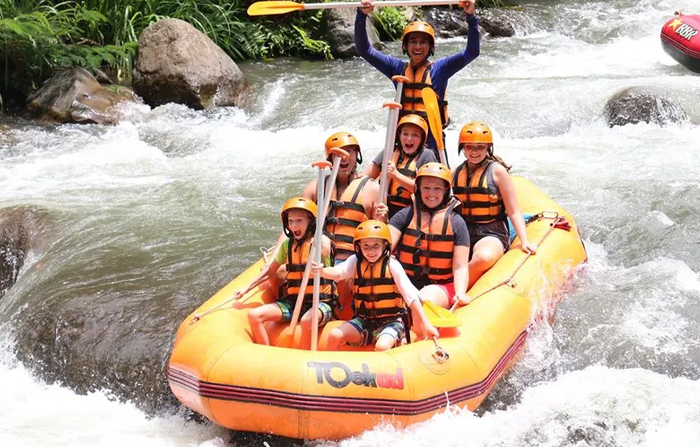
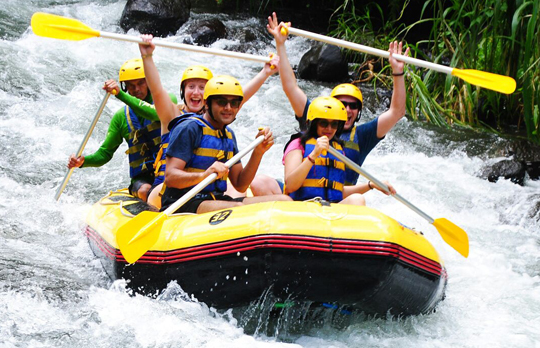
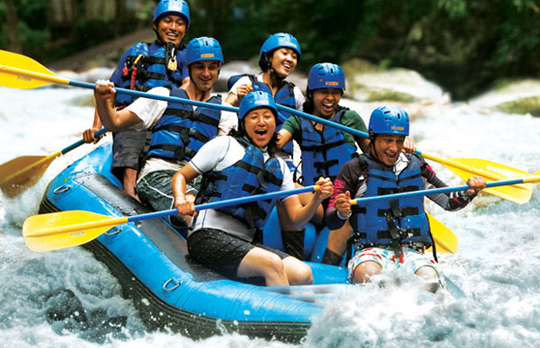

Co-Founder of Bali Cheapest Tours
We’re all about cheap holidays and low-cost deals. We've got plenty to satisfy your travel bug on our wide selection of Bali Tour Packages featuring Bali's best places.
Which crafted to match any travel style, travel period, touring needs and budget for a journey that’s perfect for you.
